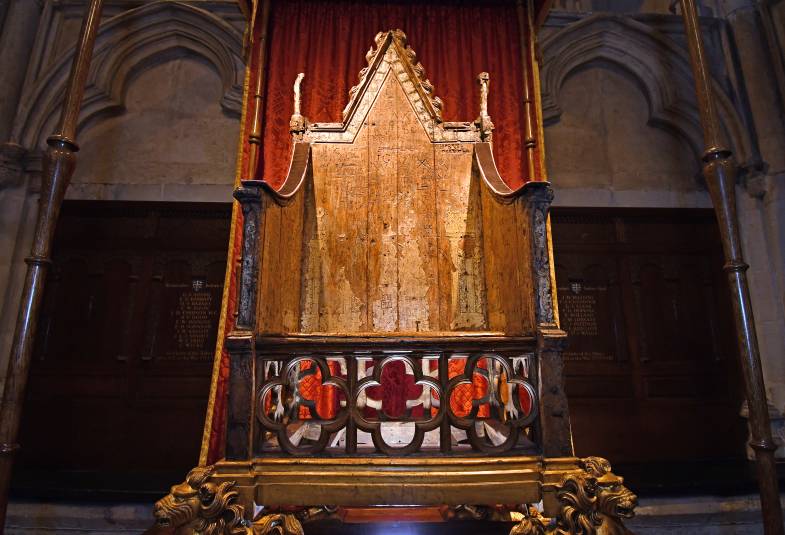• What is the historical and religious significance of thrones?
• Which chair is used at King Charles's Coronation?
• Where can the Coronation Chair be viewed by visitors?
Thrones are ceremonial chairs used by rulers or leaders which date back to ancient times.

The Old Testament includes multiple depictions: the Egyptian Pharaoh, Rameses II is described as sitting on a throne, and King Solomon made his own throne of “great ivory … and overlaid it with the finest gold”. In the Book of Isaiah, God says: “Heaven is my throne, and the earth is my footstool” and, in the New Testament, the Book of Revelation depicts Jesus as sitting on “a great white throne”.
Today, ceremonial chairs are also used in ecclesiastical contexts. Cathedrals take their name from the ‘cathedra’ (the bishop’s chair) which is often positioned in the choir, near to the altar.
The Coronation Chair, also known as St Edward’s Chair, was made at the start of the 14th Century, and is believed to have been constructed by the painter and craftsman known as Walter of Durham.
The Coronation Chair is not technically a throne, as it is usually only used for the monarch to be anointed, crowned and invested. It was originally covered in gilding and coloured glass, although much of its decoration has been lost over the centuries. King Charles III is the 27th monarch to be anointed and crowned on the Coronation Chair.
The Coronation Chair can be viewed by visitors in its permanent home of St George’s Chapel, Westminster Abbey.
The Throne Room at Buckingham Palace houses the throne, or Chair of Estate, of the British monarch. The throne has the monarch’s cypher embroidered into its upholstery.
Celebrating faith, service and community
Learn more about the Coronation, get your resources, and share your congratulations to King Charles and Queen Camilla.